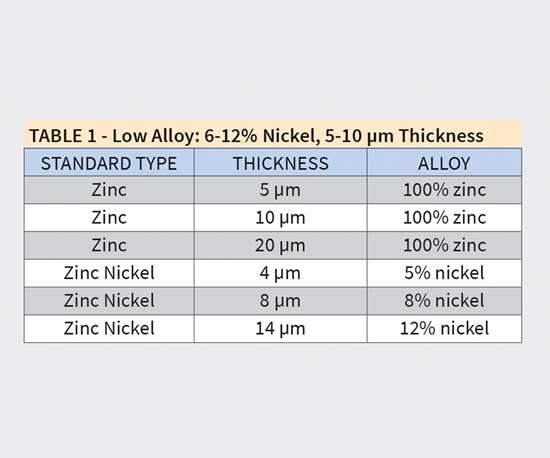Cast iron requires nickel underplate thickness.
Zinc nickel plating thickness.
For some applications designers may opt to use zinc nickel plating instead of zinc plating for further corrosion resistance the above table will not be applicable.
Please tell us what thickness you require on your purchase order.
The zinc plating process can be considered an excellent primer for paint surfaces with the paint protecting the zinc giving a lasting protection.
We do not recommend powder coating.
The process is rack plating.
For comparison zinc plated and passivated parts of a similar thickness are expected to achieve only 120 hours considerably less.
In the past we have attempted to produce threads to a undersize pitch diameter less 4 times plating thickness and use the 2a gages to check afterplate condition.
Accurate thickness measurement for both alloy deposits can be obtained using proper thickness standards.
Interpreting thickness and salt spray specifications for zinc nickel plating march 21 2013.
Standards for zinc nickel plating typically require unpassivated parts coated with 10µm of zinc nickel to withstand 500 hours or more of neutral salt spray testing before red corrosion.
To shed more light on our zinc plating thickness issue most of our in house thread ring gages are class 2a gages.
It can be formulated to meet a variety of corrosion resistance specifications.
Zinc plating with black chromate offers better corrosion resistance and anti galling characteristics than black oxide.
For zinc nickel plating what should be the correct criteria to determine the correct plating thickness.
Is 8 microns minimum.
There are a stream of zinc nickel applications for the automotive electronic aerospace and defense industries.

